China – the world’s oldest living civilisation, with a written history dating back to more than 3,500 years. Its Chinese name zhong guo means ‘middle country’ or ‘the central kingdom’; the ancient Chinese had believed that their country was the geographical centre of the world and its only civilised culture.
For most of its ancient history, China was ruled by a succession of dynasties. Most of these were Han Chinese, except for the foreign Yuan and Qing dynasties. Major dynasties that ruled ancient China are;
- Shang Dynasty 1766-1045BC
- Zhou Dynasty 1045-256BC
- Qin Dynasty 221-206BC
- Han Dynasty 206BC-AD220
The ancient Chinese were one of the most scientifically advanced civilisations. Their accomplishments include the compass, gunpowder, paper and printing, celebrated by the Chinese as the ‘four great inventions of ancient China’.
Pottery & Porcelain: Chinese potters began making porcelain, a highly-refined form of pottery making, during the Yin and Shang dynasties. While early methods were primitive, advanced porcelain making was made possible by the development of specialised kilns which could fire kaolin, a form of white clay, at very high temperatures of around 1,200°C to obtain a hard, non-porous material.
The first true porcelain, however, was produced during the Tang Dynasty when Chinese potters learnt to control the iron content, which reduced colour interference so the porcelain could be white. Porcelain making was finally mastered during the Ming Dynasty, and high quality porcelain, or ‘china’, was exported to Japan and Europe. By this time, Chinese potters produced porcelain from kaolin, and used a feldspathic stone called petuntse in the process which gave it a translucent, glasslike appearance.
Silk: Ever wondered why silk has a shimmering appearance? It comes from the triangular prism-like structure of the silk fibre, which allows it to refract light.
It is believed that the Chinese first started making silk around 2,700BC. Legend has it that Empress Si Ling Chi discovered silk when a silkworm moth cocoon fell from a mulberry tree into her tea. After some experiment, she finally managed to weave the silk filament into a piece of fabric.
The process of making silk weaving is still the same today. Known as sericulture, the cocoons are placed in hot water to release the silk filaments and kill the silkworm larvae. The filaments are combined to form yarn, wound and finally dried. Each cocoon can yield around 500 to 1,200 yards of silk.
Silk was considered China’s most valuable trade commodity, resulting in the famous Silk Road trading route. Silk making was a closely-guarded government secret until AD300 when it was leaked out to India.
Compass: The world’s first compass was made in China during the Qin Dynasty. It was made with lodestone – an iron oxide-based mineral that aligns itself in a north-south direction due to the Earth’s magnetic field – which was commonly used in Chinese geomancy and fortune-telling.
The use of a compass was recorded in several Chinese texts including a 4th century book entitled the Book of the Devil Valley Master, which describes its use in pathfinding. The first person officially recorded to have used the compass as a navigational aid was Chinese admiral Zheng He, who made eight sea voyages between 1405 and 1433.
Paper & Printing: Paper was invented in China some 3,000 years after the ancient Egyptians used papyrus for writing. Cai Lun, a government official from the eastern Han dynasty, made paper by mixing the bark of a mulberry tree and bamboo fibres with water, draining and drying the mixture on a flat bamboo frame. Other materials used in papermaking included tree bark, hemp, linen and even fishing nets.
During the Tang and Song dynasties, papers were developed for different purposes, including hemp paper, hide paper, bamboo paper, and xuan paper – made from a kind of pine tree – used particularly for calligraphy.
Advances in papermaking were complemented by the development of printing. Block printing, or xylography, was used in China by the 7th century and the earliest known printed text, a Buddhist scripture, was printed in AD868. Printing books was time-consuming, as the blackline method used required a new block to be carved for each page.
Movable type in printing was invented during the Song Dynasty. Movable Chinese characters were carved from wood, which could be arranged as needed and even reused. Later versions used clay, but these broke easily. During the Ming Dynasty, the wooden movable type was refined and books were printed using the two-colour printing process.
The rapid adoption of paper and printing technology in China precipitated the spread of knowledge among the Chinese literary elite and aristocracy.
Gunpowder: During the Han Dynasty, Taoist alchemists researching on an elixir for immortality caused many fires when they experimented with the ingredients sulphur and saltpetre (potassium nitrate). One of these alchemists later wrote an alchemy text, called Book of the Kinship of the Three, that warned against the mixing of certain materials.
By the 8th century during the late Tang dynasty, a formula for gunpowder was established. Made by combining saltpetre and sulphur with charcoal, gunpowder or ‘huo yao’ was first used to make fireworks and signal flares. Later simple hand-grenades were invented, which were thrown at the enemy using a catapult.
During the Song dynasty, gunpowder was used in rifles and rockets. The Song army also packed gunpowder into bamboo tubes and used it as a primitive form of flame-thrower.
In AD1126 a local official called Li Gang recorded the defence of the city of Kaifeng using cannons, inflicting heavy casualties on a marauding nomadic tribe.
Many early mixtures of Chinese gunpowder contained toxic substances such as mercury and arsenic compounds, and could be considered an early form of chemical warfare.
China is filled with awe-inspiring natural sights. However, it is also home to many man-made wonders. Some of these, like the legendary Great Wall of China, are ancient edifices; others are more recent engineering feats that are similarly mind-boggling.
The Great Wall of China: The Great Wall of China was first ordered constructed by Emperor Qin during the Qin Dynasty to defend his realm against marauding nomadic tribes, and its construction continued throughout successive Chinese dynasties.
The part of the wall that still remains today formed part of the Silk Road route and was built during the Ming Dynasty. It stretches some 6,350km. Over the centuries, armies were garrisoned along the wall to provide early warning of invasion and a first line of defence. Contrary to belief, its purpose was not so much to deter the northern nomadic tribes and Manchus from entering China, but to prevent them from stealing property and escaping from China.
After the formation of the Qing Dynasty, the wall no longer had any functional use as the country was then ruled by the very people the wall was built to keep out. It then became a source of construction materials for nearby villages and towns, contributing to its deterioration and destruction.
The Terracotta Army: The Terracotta Army was discovered in 1974 near Xi’an during irrigation works. It formed part of Emperor Qin Shi Huang’s mausoleum and consisted of more than 7,000 life-size terracotta figures of warriors, horses and chariots made from a mixture of clay and earth. The Chinese believe in the afterlife and the army was created for Emperor Qin after his death.
When discovered, the army was laid out in full battle formation, and included standing infantry, kneeling archers and charioteers with horses. Meticulously made, the figures had different features, facial expressions and hairstyles. Officers were distinguishable by their uniforms. The restored terracotta army is open for display in the Xi’an First Qin Emperor’s Terracotta Army Museum.
The Forbidden City: The Forbidden City began construction in 1406 during the Ming Dynasty and took 14 years to complete. It stands exactly in the centre of ancient Beijing, and was the political nerve centre of China until the end of the Chinese dynastic era. It was home to 24 Ming and Qing emperors in all.
Rectangular in shape, the Forbidden City is the world’s largest palace complex and covers 720,000 sq m. It is surrounded by a 6m deep moat and 10m high walls thick enough to withstand cannon attacks.
The southern section of the city, or the Outer Court, consists of five halls used for ceremonial purposes. The northern section, or the Inner Court, was the residence of the Emperor and his family, eunuchs and maid-servants.
The buildings within housed the Chinese aristocracy. Yellow – the royal colour – dominated the rooftops. On each corner of the roof are small statuettes, and the number depicted the owner’s social status. The residence of the Emperor had nine statuettes, while ten symbolises heaven and is used only on the most holy building in the entire city.
The Three Gorges Dam: The Yangtze River is China’s longest river, and the third largest in the world. More commonly known among the Chinese as the Chang Jiang, or the ‘long river’, the Yangtze is the lifeblood of northern China but also its greatest source of grief.
Since time immemorial, floods along the Yangtze have flattened towns and killed millions along its banks. To control the Yangtze’s seasonal floods China began constructing the Three Gorges Dam in 1994, a project of monumental proportions.
Built just west of Yichang in the province of Hubei, the Three Gorges Dam will be the largest dam in the world when it is due to be completed in 2009. The dam will be more than 2km long and almost 200m high, and will feature a reservoir with a capacity of more than 31 billion cubic metres.
Not only will the dam control flooding, it will help to improve navigation along the Yangtze and provide immense hydroelectric power to the surrounding regions – experts expect it to create as much power as 18 nuclear power plants.
However, the huge construction project is not without its critics. Some 60,000 hectares of land will be fully submerged by the project, including 160 towns and 16 archaeological sites. Along with the potential destruction of important sites of historical and cultural value, more than 1m Chinese will have been displaced and have to be resettled by the end of the project.
Beijing’s Olympic Marvels:
The Olympic Stadium – The 80,000-seat Olympic Stadium in Beijing built for the 2008 Olympics cost 3.5bn yuan (£254m). Nicknamed the ‘bird’s nest’ due to the immense latticework of irregularly angled metal girders, the Olympic Stadium will be the centrepiece of the 2008 Olympic Games and will host the opening and closing ceremonies as well as track-and-field competitions.
The stadium is a monumental edifice, it is 330m long, 220m wide, 69m tall and covers an area of some 250,000 sq m. Building the metal lattice-like structure that encircles the stadium consumes almost 50,000 tonnes of steel! Originally planned with a retractable roof, budget constraints led the builders to scrap the idea.
The Beijing National Swimming Centre – Known as the ‘Water Cube’, it was inspired by soap bubbles, and its shape is based on the fundamental arrangement of organic cells in nature. Costing some £72m, the Beijing National Swimming Centre covers around 70,000 sq m and consists of five pools – one of which has a wave machine – as well as water rides. It boasts some 17,000 seats and will host swimming, diving, water polo and synchronised swimming events during the 2008 Olympic Games. It won an award in the 9th International Architecture Exhibition during La Biennale di Venezia in 2004 for its stunning design.


 Strong vertical lines and pure geometry make Rockefeller Center’s building art deco.
Strong vertical lines and pure geometry make Rockefeller Center’s building art deco. Many movie theaters were built in the art deco style.
Many movie theaters were built in the art deco style. 

 The simplicity of plakatstil art also influenced the art deco look.
The simplicity of plakatstil art also influenced the art deco look.
 He often reduced his subjects to silhouettes and geometric symbols. Cassandre believed in the total integration of word and image. This is perhaps his single most important contribution to graphis design.
He often reduced his subjects to silhouettes and geometric symbols. Cassandre believed in the total integration of word and image. This is perhaps his single most important contribution to graphis design.
 Cassandre’s illustrations helped romanticize the appeal of the motor car, locomotive and ocean liner.
Cassandre’s illustrations helped romanticize the appeal of the motor car, locomotive and ocean liner. In Cassadre’s own words the poster was “a means of communication between the seller and the public, somewhat like a telegraph. The poster designer is like a telephone operator: he does not draft messages, he dispatches them. No one asks him what he thinks; all he is asked to do is to communicate clearly, powerfully and precisely.”
In Cassadre’s own words the poster was “a means of communication between the seller and the public, somewhat like a telegraph. The poster designer is like a telephone operator: he does not draft messages, he dispatches them. No one asks him what he thinks; all he is asked to do is to communicate clearly, powerfully and precisely.” Cassandre’s bold simple designs and large planes of color emphasized the 2D aspect of the poster. Influenced by the cubists, he conferred an aesthetic status on everything he advertised.
Cassandre’s bold simple designs and large planes of color emphasized the 2D aspect of the poster. Influenced by the cubists, he conferred an aesthetic status on everything he advertised.
 Cassandre’s raybands and geometric type makes its way to America. In America, “art deco” was sometimes referred to as “art moderne”, “jazz style” or “streamline style”. Note the glamorous lifetyle depicted. Sophisticated elegance is depicted with flat shapes of color and reduced detail.
Cassandre’s raybands and geometric type makes its way to America. In America, “art deco” was sometimes referred to as “art moderne”, “jazz style” or “streamline style”. Note the glamorous lifetyle depicted. Sophisticated elegance is depicted with flat shapes of color and reduced detail. The stock market crashed the same year this image was created. Ironically, the great depression made glamorous images even more desirable, further widening the gap between advertising and reality.
The stock market crashed the same year this image was created. Ironically, the great depression made glamorous images even more desirable, further widening the gap between advertising and reality. Simplified shapes based on geometry evokes the art deco period.
Simplified shapes based on geometry evokes the art deco period.

































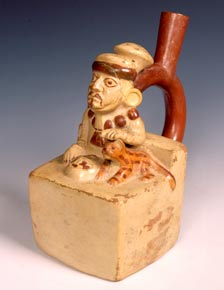
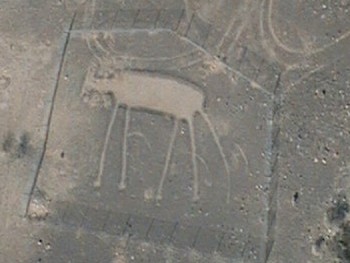
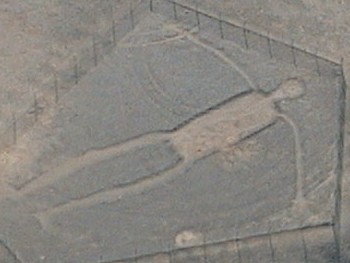



























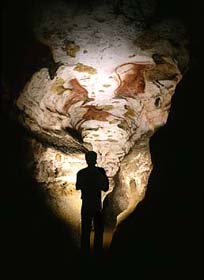 On Thursday, September 12, 1940…
On Thursday, September 12, 1940…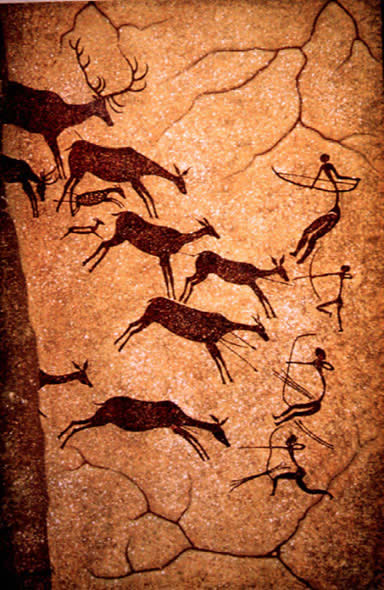 ,that the four teenagers made out the first paintings on the walls. Their names were; Marcel Ravidat, Jacques Marsal, Georges Agnel, Simon Coencas. A teenage jaunt on the hill overlooking the village of Montignac was to materialise into one of the most renowned archaeological discoveries of the 20th century.
,that the four teenagers made out the first paintings on the walls. Their names were; Marcel Ravidat, Jacques Marsal, Georges Agnel, Simon Coencas. A teenage jaunt on the hill overlooking the village of Montignac was to materialise into one of the most renowned archaeological discoveries of the 20th century.